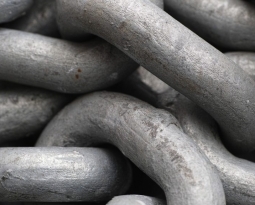Idaho Patent of the Month – February 2023
Continuous Composites Inc was founded with the goal of injecting new life into 3D printing. They began experimenting and testing to find answers to the problems that plagued the composite manufacturing industry including weak materials, slow print speeds and small build volumes. With their newly patented additive manufacturing system, they are paving the way for a more efficient and cost-effective way of fabricating high-performance composites.
Traditionally, the manufacturing process of composites has been a laborious and time-consuming process. Continuous Composites’ innovative system, marketed as CF3D for Continuous Fiber 3D Printing, allows for the additive manufacturing of composite structures with incredible speed.
Their system involves a discharge head that is connected to a support and is capable of discharging composite material. The composite material is then partially cured at the point of discharge, and a densifying material is advanced towards it, followed by pyrolyzing of the densifying material using a heater. This results in a composite structure that is denser and more uniform in shape than previously achieved. This process allows a continuous dry fiber to be discharged, and snap cured using a thermosetting resin. A proprietary software-driven motion platform ensures every movement is precise, supporting the manufacturing process for even the most complex designs.
Continuous Composites’ additive manufacturing system is ideal for fabricating components for high-temperature environments, such as aerospace and nuclear applications. The system’s ability to manufacture composite structures with complex shapes and dimensions allows for the production of components that were previously impossible to fabricate with traditional methods. Additionally, the system significantly reduces the labor and time required to manufacture composites, which ultimately translates into cost savings for end-users.
Continuous Composites strives to set the standard for how industries manufacture through high-quality and innovative technologies. This requires an extensive commitment to research and development as they work to break down barriers and remove limitations in the industry. The system’s ability to produce complex structures in a more efficient and cost-effective way opens up new possibilities for the use of composites in a range of high-performance applications.
Are you developing new technology for an existing application? Did you know your development work could be eligible for the R&D Tax Credit and you can receive up to 14% back on your expenses? Even if your development isn’t successful your work may still qualify for R&D credits (i.e. you don’t need to have a patent to qualify). To find out more, please contact a Swanson Reed R&D Specialist today or check out our free online eligibility test.
Who We Are:
Swanson Reed is one of the U.S.’ largest Specialist R&D tax advisory firms. We manage all facets of the R&D tax credit program, from claim preparation and audit compliance to claim disputes.
Swanson Reed regularly hosts free webinars and provides free IRS CE and CPE credits for CPAs. For more information please visit us at www.swansonreed.com/webinars or contact your usual Swanson Reed representative.

















